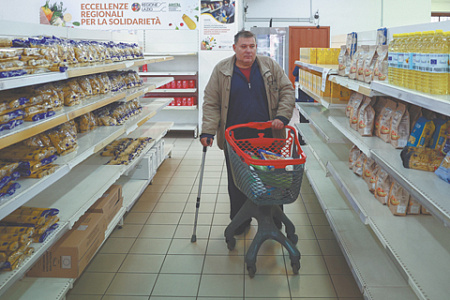
Italy is in the grip of a severe cost of living crisis, with official data revealing that food prices have surged by an alarming 30.1% since 2019. According to a report by the National Institute of Statistics (Istat), this dramatic increase is profoundly affecting household budgets across a nation celebrated for its culinary heritage. While Italy’s food inflation is technically below the EU average of 39.2% and Germany’s 40.3%, the on-the-ground reality for Italian consumers is one of daily financial strain.
A deeper analysis by the Center for Consumer Research (Crc) describes the situation as an “astronomical growth” in the price of everyday staples. The cost of butter has skyrocketed by 60%, while olive oil—a cornerstone of Italian cuisine—is up 53.2%. Other essentials have seen similar hikes, with rice increasing by 52%, cocoa powder by 51.4%, and coffee by 47.6%. This has led to a situation where the family shopping basket is “becoming emptier, but paradoxically, more and more expensive,” according to Furio Truzzi, chairman of the Crc’s scientific committee.
The pressure on consumers extends far beyond the grocery store. A study by the Confcommercio business confederation shows that mandatory expenses—such as housing, utilities, healthcare, and transport—now devour 42.2% of total family spending, a significant increase from previous decades. Over the last 30 years, the index for these non-negotiable costs has ballooned by 132%, dwarfing the 55% rise in discretionary spending. Energy tariffs have been a primary driver, soaring by a staggering 178% over the same period.
This grim picture for households stands in stark contrast to the government’s optimistic economic outlook. Economy Minister Giancarlo Giorgetti recently affirmed projections for modest GDP growth of 0.6% this year and 0.8% for the next, presenting a picture of resilience despite global challenges. This dissonance highlights a growing disconnect between macroeconomic indicators and the lived financial reality of ordinary citizens.
Ultimately, the Italian experience mirrors a troubling paradox unfolding across Europe: economic growth is failing to keep pace with the rising cost of a dignified life. As essential goods and services become increasingly unaffordable, families are left in a precarious position. This widening gap between economic performance and household prosperity presents a fundamental challenge that leaders in Italy and beyond have yet to effectively resolve.
